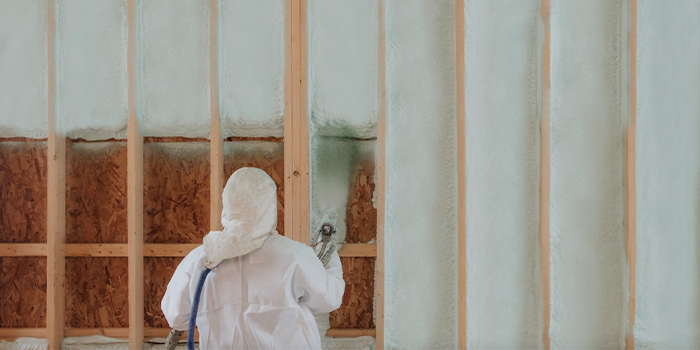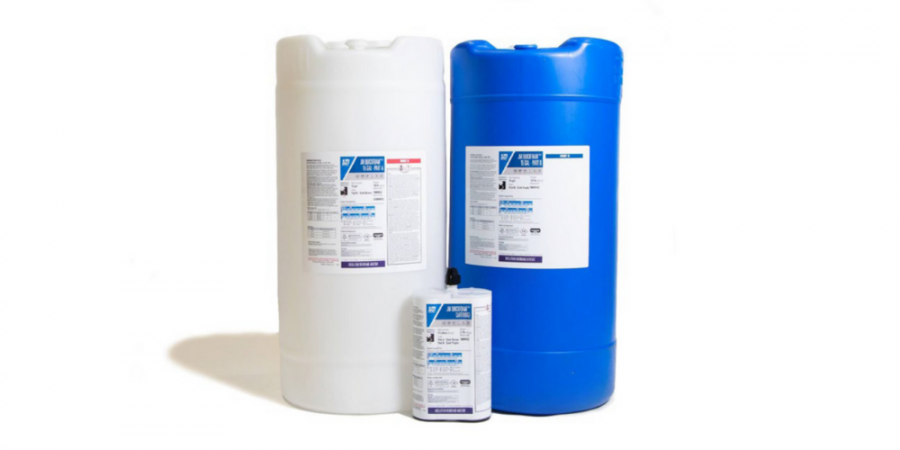The Spray Foam Industry Remains Strong as We Enter 2024

THE WOODLANDS, TX – January 17, 2024 – As we kick off 2024, I’m happy to report that the spray foam industry is thriving. While it is true that construction projects and contractors are still feeling the impacts of inflation and high interest rates, demand for spray foam continues to grow. Additionally, inflation has slowed considerably and many expect interest rate cuts will begin this year. These factors bode well for contractors, installers, manufacturers and suppliers of spray foam.
Two things are likely to enhance demand for spray foam insulation and roofing this year. First, there is an expectation among housing experts that the construction of new homes will increase moderately around the middle of the year. Builder confidence is rising with the anticipation of interest rate cuts and there’s a desperate need for more housing, which will likely spur new construction.
Second, there’s a general agenda growing among the building industry, lawmakers and consumers toward energy efficiency and resiliency, which is driving demand for high-performance building products. Climate change, and the increasing number of catastrophic weather events resulting from it, are issues that demand a better performing building envelope across all residential and commercial structures. Insulation and roofing solutions that reduce buildings’ energy consumption while withstanding storms and disasters are now in high demand. As stakeholders in this industry, we all know spray foam enhances the performance of the building enclosure. We offer the right solution to address these issues.
While recovered from many of the problems that arose during the height of the pandemic and, up until recently fairly calm, the supply chain is unfortunately not immune to recent events in the Red Sea. Freight costs are rising as a result. On a brighter note, there are no significant issues with the accessibility of raw materials currently. All said, it’s imperative that contractors keep their suppliers abreast of their product needs, especially as demand for spray foam continues to grow. The supply chain could potentially tighten if we all fail to plan accordingly.
The spray foam retrofit marketplace has been a bit slower than anticipated but should also improve this year. Last year, many expected that the Inflation Reduction Act’s 25C Energy Efficient Home Improvement Tax Credit, which provides homeowners with a tax incentive for investing in certain energy efficient retrofits (including those involving spray foam insulation), would increase retrofit work. While that didn’t occur to the degree forecasted in 2023, many believe that will turnaround this year. With interest rates elevated and for-sale housing more expensive over the past couple years, many homeowners stayed in place rather than selling. As a result, the equity in their homes grew and now provides them with discretionary funds for home improvements, including those aimed at lowering energy bills or fortifying the home against storm damage.
Despite the generally positive outlook, expect some challenges to emerge. Some will come in the form of potential spray foam related regulations and legislations. Notably, Europe (a region whose regulations often precede those in the U.S.), is currently enacting legislation which could impact blowing agents and fire retardants in the years to come. This could lead to additional changes to closed and open cell technology and continues to threaten the industry without viable alternatives to today’s solutions.
We have also just entered a new legislative season in the United States, where a number of building envelope construction and performance requirements are established at the state level. During the legislative season, any number of bills are proposed in various states with the potential to either harm or help the spray foam industry. Any one of them passing has te potential to impact the livelihood of a region’s contractors and installers, particularly when the bill in question is harmful to spray foam. This means there is real need for manufacturers and contractors to join forces and strengthen our industry’s collective voice. We need to work together to ensure that spray foam remains an available option to customers in all 50 states.
The other ongoing challenge for contractors is the persistent labor shortage. Many of the industry’s top skilled workers are reaching retirement age. The spray foam industry, like other construction trades, hasn’t done enough to attract the new generation. Engagement at high schools, community colleges, and even among those exiting the military in search of new career opportunities, are all great avenues for reaching and attracting new talent.
Attracting new spray foamers isn’t the only goal, however. We must also provide education and encourage the certification of the talent we have. The manufacturers of quality spray foam products must offer training programs (Huntsman Building Solutions’ is called HBS University, or HBSU) with courses for both new and seasoned installers alike, as education should be ongoing. The Spray Polyurethane Foam Alliance provides the Professional Certification Program, which helps ensure health and safety on the job, as well as product performance and customer confidence. Contractors should be taking full advantage of all these offerings as they are essential to professionalism, ensure proper and safe SPF installation, and optimize product performance and lifespan. Also, more and more customers now demand their contractors and installers be skilled and certified.
On a final note, there always remains a possibility that the larger economy could take a turn for the worse. That would obviously be challenging for all, including spray foam contractors. If that was to occur, it becomes more important than ever that contractors make an even greater effort to share the benefits of spray foam with customers within their local markets. Marketing the product is key regardless of what’s happening with the economy. Diversification into other related fields (in coatings, for example) could also really help contractors weather an economic storm. It’s also always a good idea to align with a leading manufacturer that offers consistency in product performance, ongoing education, technical support, and that invests in its contractor partners as well as in the industry at-large. Hopefully, there won’t be any bad surprises with the economy in 2024. Nevertheless, these suggestions will benefit contractors under any market conditions.
About the Author
Simon Baker is global president of Huntsman Building Solutions, a leader in spray polyurethane foam. Visit www.huntsmanbuildingsolutions.com.
For use by SprayFoamMagazine.com & Spray Foam Magazine

Disqus website name not provided.










































